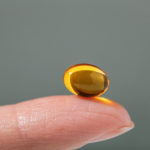By David Blyweiss, M.D.
I was stunned! So stunned that I had to read the headline again. Vitamin D deficiency common in U.S. children. How could this be, especially here in the land of plenty?
The article’s opening paragraph was even more startling. “A whopping 70 percent of American kids aren’t getting enough vitamin D, and such youngsters tend to have higher blood pressure and lower levels of good cholesterol than their peers.” This was according to two new studies published the journal Pediatrics.
I’m all too aware of the devastating impact low vitamin D levels can have on adults. In fact, I see the consequences—from osteoporosis to diabetes to cancer—in my office daily. But these two studies clearly shine the spotlight on children. After doing some digging, I discovered a growing suspicion among pediatricians that, if our children start out with low vitamin D levels and never increase them, they may be putting themselves at risk for developing all of these diseases at a much earlier age.
What’s causing this D deficit? That’s an easy question to answer. Fear. Unlike when we were kids, parents today are afraid to let their children play outside. Yes, the world is a dangerous place these days. But parents are also afraid of the sun—the very thing that triggers the body to produce vitamin D. So they slather their children with sunscreen, which effectively blocks both the good and bad effects of the sun.
In response to this deficiency, the American Academy of Pediatrics now instructs pediatricians to prescribe that all children, especially breast-fed babies, take 400 IU of a vitamin D supplement every day through their teen years—twice their former recommendation. But even though many parents give their children a D-fortified multivitamin every day, these studies show that it’s simply not enough.
In the first study, which took place at Albert Einstein College of Medicine in the Bronx, New York, the researchers looked at the vitamin D levels of more than 6,000 kids, ages 1 to 21. They checked each of them for vitamin D deficiency and found that nine percent, of U.S. children were deficient—and another 61 percent had insufficient levels of this important vitamin in their blood.
Further testing showed that those without sufficient D were more likely to have high blood pressure and lower levels of HDL (good) cholesterol. They also had higher levels of parathyroid hormone—a measure of bone health. When levels are high, it suggests that bones need more calcium to grow.
In the second study, a research team from Johns Hopkins Medical Institutions looked at 3,577 teens. Those with low levels of vitamin D were more likely to have high blood pressure, high levels of blood sugar, and metabolic syndrome (a cluster of factors known to increase risk of heart disease).
The World's Quickest Solution for Ending Prostate and Urinary Misery
This has recently been revealed to be one of the only real breakthroughs in prostate health.
The seeds of a strange fruit (sometimes called "Chinese Apples") hold powerful phytonutrients that are a revolution in prostate health.
In fact, UCLA and Veterans Administration research have now proved this to be true.
Not only that, but it may be the worlds quickest solution for ending prostate misery.
Simply stated, these phytonutrients represent a huge step beyond beta sitosterol, saw palmetto, and other phytosterols alone.
Simply click HERE if you want to have fast prostate relief...restful, uninterrupted sleep...no more constant "urges to go"...enhanced virility...and optimal prostate support for life.
While the two studies had slightly different results, there were some definite parallels. Both studies found that low vitamin D levels were especially common in girls, African-Americans, Mexican-Americans, the obese, those who drank milk less than once a week and those who spent more than four hours a day watching TV, playing videogames or using computers. The deficiency was also more common among the older children tested.
What can be done to correct this potentially devastating deficiency? Just feeding your kids vitamin D fortified foods or giving them a multivitamin won’t do the trick. Even the increased dosage recommended by the American Academy of Pediatrics isn’t enough.
If recent Lebanese research is correct, it may take up to 2,000 IUs daily to keep our children well. During their study, the researchers gave a group of teens various doses of vitamin D at various intervals. Only those given the maximum amount in the study, 2,000 IUs a day, increased their vitamin D levels to the amount considered optimal. And none of the children showed any toxicity or ill effects.
If you have an infant or children younger than 12, ask your health care provider to check your child’s vitamin D levels. Then work with your doctor to come up with the right dose for your particular child. It’s one of the best ways to protect their health, now and for decades to come.
References:
Maalouf J. Short- and long-term safety of weekly high-dose vitamin D3 supplementation in school children. Journal of Clinical Endocrinology and Metabolism. 2008;93:2693-2701.
Misra M. Vitamin D Deficiency in Children and Its Management: Review of Current Knowledge and Recommendations. Pediatrics. 2008;122:398-417.
Reis JP. Vitamin D Status and Cardiometabolic Risk Factors in the United States Adolescent Population. Pediatrics. 2009; doi:10.1542






